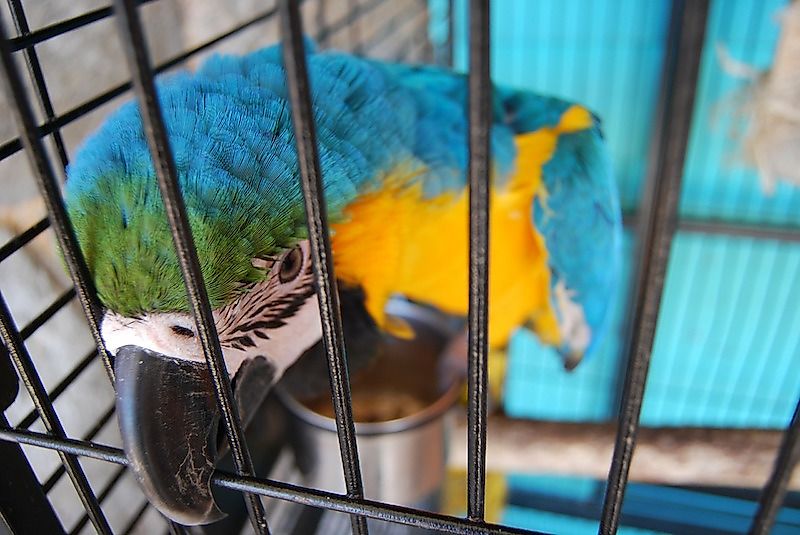Parrot Varieties Most Threatened By Illegal Live Trafficking

Parrots are mainly traded as pets and in America, 63% of homes own at least a bird pet of which the majority are parrots. These birds are kept as pets because of their brilliant colors, their social and intelligent nature, and the ability to vocalize. Parrot trade is a lucrative enterprise around the world. However, parrots have become increasingly endangered species of wildlife in most countries. Some countries have put restrictions on parrot trade while in other countries the trade is completely illegal. Despite the ban and restrictions on trading in these birds, parrot market still operates both legally and illegally. Latin America is one of the regions with the highest number of illegally traded live parrots. Most of these countries export birds to Europe, US, Central America and the Caribbean. The European Union is the highest importer of live parrot. Some of the illegally traded live parrots include the African Greys, Aratinga and Eupsittas, Other genera, and Amazon among others,
Loss Of Wild Parrot Populations
African Greys
African greys parrot is a native to equatorial African countries including Angola, Congo, Kenya, Ghana, Cameron, Uganda, and Ivory Coast. The population of this bird has been significantly affected by the illegal trafficking and trading. Currently, about 13 million African greys are surviving worldwide. African greys are sought after majorly because of their beauty and their talkative nature. These birds are also brilliant and can perform at a rate of a 4-6-year-old child. African greys are in high demand especially in Singapore, Europe, and the US where they are commonly traded illegally. Between 2007 and 2014, 4779 live African grays parrots were seized from illegal traders.
Aratinga and Eupsittas
Aratinga and Eupsittas are endangered species around the world and are mainly raised in captivity. Aratinga parrots are predominantly yellow, green, or orange, are widely found in South America especially in the regions of Brazil where they are referred to as Jandai. They are very social birds commonly living in groups. These birds are mainly kept as pets in most homes though they need larger cages because of their sizes. Eupsittas are also common because of their beauty serving entirely as pets in most homes. They are illegally traded in large numbers in Europe and the US. Between 2007 and 2014 a total of 2149 illegally trafficked parrots were seized entering these numbers.
Amazon
Amazon parrots are medium-sized birds found mainly in Mexico and the Caribbean. This bird is predominantly green and feeds on seeds and nuts. Amazon parrots are highly sought after because of their ability to mimic human speech and sounds. Because of their capacity to mimic humans, they are considered as companion pets. Most of the Amazon parrots are raised in cages while their existence is threatened due to increased illegal hunting. 1373 illegally trafficked were seized between 2007 and 2014.
Need To Enforce Laws
Other species of parrots that have been illegally trafficked in large numbers include Monk Parakeets, Brotogeris, and Macaws. Most of these parrots are raised in captivity in most countries while Europe offers a large market for these birds. Between 2007 and 2014, over 3000 parrots of these kinds were seized in different countries. If the laws prohibiting trafficking of parrots are not enforced, then most parrots will continue living in captivity.
Illegal Trafficking Of Live Parrots: Which Parrots Are Most Threatened?
| Rank | Parrot Genus | Number of illegal live parrot trade seizures (2007 to 2014) |
|---|---|---|
| 1 | African greys | 4,779 |
| 2 | Aratinga and Eupsittas | 2,149 |
| 3 | Other genera | 1,482 |
| 4 | Amazon | 1,373 |
| 5 | Monk Parakeets | 800 |
| 6 | Brotogeris | 457 |
| 7 | Macaws | 333 |











